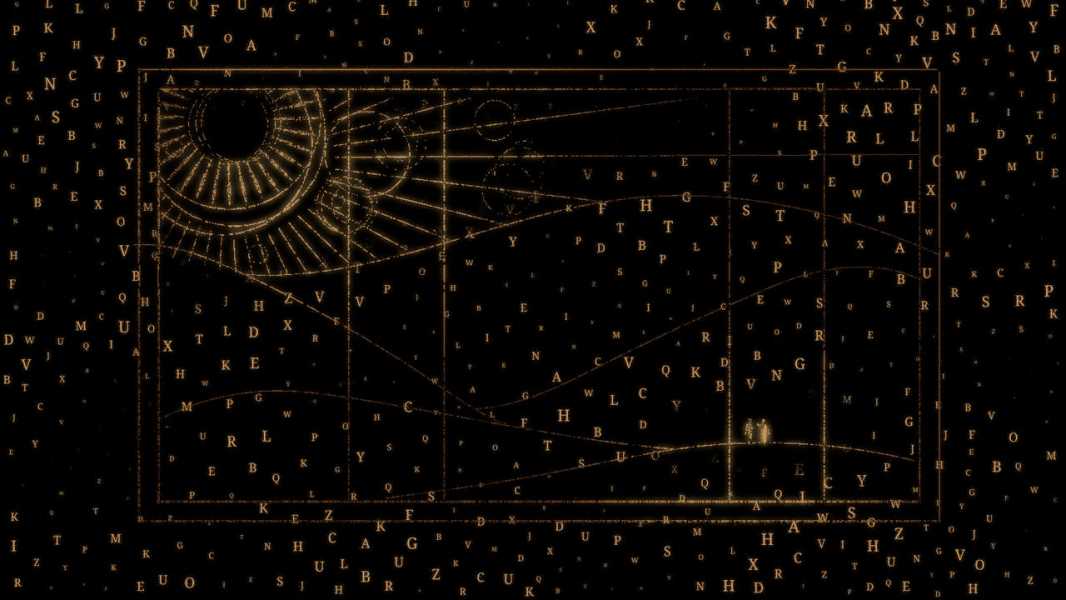
Save this storySave this storySave this storySave this story
A trailer for Denis Villeneuve’s “Dune: Part Two” features the boy prophet Paul Atreides, played by Timothée Chalamet, yelling something foreign and uninterpretable to a horde of desert people. We see Chalamet as the embodiment of charismatic fury: every facial muscle clenched in tension, his voice strained and throaty and commanding. A line at the bottom of the screen translates: “Long live the fighters!”
The scene fills barely a few seconds in a three-minute trailer, yet it establishes the emotional tone of the film and captures the messianic fervor that drives its plot. It also signals the depth of Villeneuve’s world-building. Part of what made his first excursion into the “Dune” universe such an experiential feast was its vivid, immersive quality, combining monumental architectural design with atmospheric soundscapes and ethereal costuming. We could see a few remnants of our world (remember the bit with the bagpipes?), but the over-all effect was transportive, as if the camera were not a piece of equipment but a cyborgian eye live-streaming from a far-flung alien civilization. Chalamet’s strange tongue is part of the franchise’s meticulous set dressing. It’s not gibberish, but part of an intricate linguistic system that was devised for Villeneuve’s adaptations.
Engineered languages such as the one Chalamet speaks represent a new benchmark in imaginative fiction. Twenty years ago, viewers would have struggled to name franchises other than “Star Trek” or “The Lord of the Rings” that bothered to invent new languages. Today, with the budgets of the biggest films and series rivalling the G.D.P.s of small island nations, constructed languages, or conlangs, are becoming a norm, if not an implicit requirement. Breeze through entertainment from the past decade or so, and you’ll find lingos designed for Paleolithic peoples (“Alpha”), spell-casting witches (“Penny Dreadful”), post-apocalyptic survivors (“Into the Badlands”), Superman’s home planet of Krypton (“Man of Steel”), a cross-species alien alliance (“Halo”), time-travelling preteens (“Paper Girls”), the Munja’kin tribe of Oz (“Emerald City”), and Santa Claus and his elves (“The Christmas Chronicles” and its sequel).
A well-executed conlang can bolster a film’s appearance of authenticity. It can deepen the scenic absorption that has long been an obsession for creators and fans of speculative genres such as science fiction and fantasy. But the entertainment industry’s fixation with crafting super-realistic realms can also be distracting. Speculative fiction works by melding the familiar with the unrecognizable. It makes trenchant provocations not by creating the most believably alien worlds possible but by interweaving them with strands from our own.
Hollywood’s current obsession with constructed languages arguably started with “The Lord of the Rings” film adaptations of the early two-thousands. J. R. R. Tolkien was a professor of Old English at Oxford and a lifelong conlanger, and he famously created the tongues of Middle-earth long before writing the books. “The invention of languages is the foundation,” he once wrote. “The ‘stories’ were made rather to provide a world for the languages than the reverse.” The trilogy’s success showed the power of conlangs to create engrossing alternate realities, inspiring filmmakers to seek out skilled language creators.
The most influential conlanger working today is David J. Peterson. Born in Long Beach, California, Peterson started to create languages in 2000, while he was a sophomore at U.C. Berkeley. His early projects were amusing experiments: X, a language that could only be written; Sheli, which included only sounds that he liked and was initially unpronounceable; and Zhyler, which he created because he enjoyed Turkish and which, in honor of the Heinz Company, had fifty-seven noun cases. In 2005, he graduated with a master’s degree in linguistics from U.C. San Diego. Two years later, he co-founded the Language Creation Society with nine other conlangers.
Peterson’s big break came in 2009, when HBO reached out to the Language Creation Society with a strange request. They were creating a television show (which would turn out to be “Game of Thrones”) and wanted someone to develop a language (which would emerge as Dothraki). Nothing like this had ever happened before, so the society organized a competition that would be judged by the show’s producers. After signing a nondisclosure agreement, applicants were invited to send in a phonetic breakdown of Dothraki, a romanized transcription system, six to eight lines of translated text, and any additional notes or translations.
Peterson had an edge over his competitors: unemployment. For two and a half weeks, he worked eighteen-hour days, assembling a hundred and eighty pages of material. He made it to the second round and eventually produced more than three hundred pages in Dothraki. He landed the job and was later invited to develop five more languages for the series, including High Valyrian, which proved especially popular among fans. In 2017, a High Valyrian course launched on the language-learning app Duolingo; at one point in 2023, more than nine hundred thousand people had signed up as active users.
Along with James Cameron’s “Avatar” (2009), which appeared in theatres soon after Peterson was hired by HBO, the first season of “Game of Thrones” demonstrated that audiences not only tolerated fictional languages—they loved them. What had previously been a nerdy pastime transformed into a standard of fantasy filmmaking. Peterson became the go-to language wizard. He has since been hired to create some fifty other conlangs, including languages for the Dark Elves in “Thor: The Dark World” (2013), for the Grounders in the television show “The 100” (2014-20), and for the desert-dwelling Fremen in the two “Dune” movies. When Chalamet, as Paul Atreides, calls to his combatants, he does so in words devised by Peterson and his wife and fellow-conlanger, Jessie. (Peterson worked alone for the first “Dune” film, and collaborated with her on the second.)
Peterson’s success stems from a commitment to naturalism. He knows languages well; he has studied more than twenty, including Swahili, Middle Egyptian, and Esperanto, and seems to have an endless mental Rolodex of the lexical, grammatical, and phonological patterns found around the world. Yet, when an interviewer asked him how, when assembling a new conlang, he decides “which aspects of a language to borrow from and mimic” (Greek suffixes? Mongolian tenses? Japanese particles?), he rejected the premise. “If you just ripped out a structure from one language and put it in your own, the result would be inauthentic,” he replied.
Peterson’s idea of authenticity sometimes puts him at odds with his source texts. When creating High Valyrian, Peterson was forced to include words that George R. R. Martin had composed for the books, including dracarys, meaning “dragon fire.” The word was obviously inspired by the Latin draco, meaning “dragon,” a decision that Peterson found “unfortunate.” “In the universe of the books, there is no such thing as the Latin language—or any of the other languages on Earth,” he once wrote. “It is literally impossible for any word (or anything else) in the Song of Ice and Fire universe to be related to anything in our universe.” As a result, he made dracarys its own root and chose zaldrīzes as the word for “dragon,” provoking a string of disappointed comments from “Game of Thrones” fans on his blog.
As Peterson laid out in his 2015 book, “The Art of Language Invention,” he treats languages as evolving systems whose features are interconnected and shaped by a unique history. To design verbs in High Valyrian, for example, he simulated a four-stage evolution from a prehistoric form. In the version of High Valyrian spoken in “Game of Thrones,” verbs have an imperfect stem (for past actions that were continuous or incomplete) and a perfect stem (for past actions that were completed). The perfect stem, he decided, was formed in ancient times by appending -tat to the end of the imperfect. Over time, this became -tet and then -et, which often reduces to -t in the version spoken in the television show. (During that imagined history, -tat also gave rise to the verb tatagon, meaning “to finish.”) There are countless other intricacies to High Valyrian verbs, yet, for Peterson, even producing this lone grammatical feature required simulating generations of linguistic change.
When he was invited to work on “Dune,” Peterson fell back on the methods he had honed for previous projects. “In the case of both Dune and Game of Thrones,” he wrote during an Ask Me Anything on Reddit before Part One’s release, “there was some minimal language elements from the books that I had to account for, but other than that it was up to me to create something brand new.” He had decided, in other words, to develop what conlangers call an a-priori language—one whose vocabulary and grammar are wholly original, and not derived from an existing linguistic system.
Creating something new might have made sense for other projects, but, as fans will surely inform you, language functions differently in “Dune.” Written by Frank Herbert, and originally published in 1965, the novel recounts how noble houses compete to control the desert planet Arrakis (the eponymous Dune), the only source of the most precious substance in the universe. The story entwines the fate of the aristocratic Paul Atreides with the indigenous Fremen, whose harsh desert life style and religious prophecies set the scene for ecological challenges and epic political face-offs.
Herbert’s “Dune” takes place unimaginably far in the future. The time span separating us from the events of “Dune” is roughly twice the distance between us and the end of the Ice Age; sabre-toothed tigers are closer to us than the plot of “Dune” is. Nevertheless, it’s a world suffused with familiar echoes, most of which manifest in language. The novel features words derived from French (“verite”), Turkish (“kanly”), Hebrew (“Kwisatz Haderach”), German (“schlag”), and Navajo (“Nezhoni”). Having been raised in a Sikh household, I remember noticing the emperor’s title, Padishah, a Persian term that has been used as an honorific for rulers in North Africa, the Middle East, and South Asia. Sikhs use it to refer to God and the ten prophet leaders, or gurus.
The language with the greatest influence in “Dune” is Arabic. In the novel, the Fremen use at least eighty terms with clear Arabic origins, many of them tied to Islam. The Fremen follow istislah (“natural law”) and ilm (“theology”). They respect karama (“miracle”) and ijaz (“prophecy”), and are attentive to ayat (“signs”) and burhan (“proof”) of life. They quote the Kitab al-Ibar, or “Book of Lessons,” an allusion to the encyclopedia of world history penned by the fourteenth-century Arab historian Ibn Khaldun.
Central characters are dignified with Arabic names. The colossal sandworms are called shai-hulud (“thing of eternity”). Paul Atreides’s sister is Alia (“exalted”). Paul himself is known as Muad’Dib, an epithet that resembles the Arabic word for teacher (mu’addib), and he is fabled to be the Lisan al-Gaib, translated in the book as “Voice of the Outer World” but which, in modern Arabic, means something closer to “Tongue of the Unseen.”
The book explains these similarities. “We are the people of Misr,” says a Fremen wise woman, using the Arabic word for Egypt, elaborating that their “Sunni ancestors fled from Nilotic al-Ourouba,” or Nile of the Arabs. The intervening millennia fused their Sunni heritage with a variant of Buddhism, but that doesn’t change a basic fact: the Fremen are descendants of Muslim Arabs, and they wear that heritage in their speech.
Why did Herbert Arabize the Fremen? Scholars such as Ali Karjoo-Ravary, a professor of history at Columbia, and Haris Durrani, a Ph.D. student at Princeton, have argued that the Fremen identity is an allegory. The book, about barons and dukes with European names vying for a desert land and the invaluable commercial booty buried in it, is a transparent metaphor for the liberationist struggles that convulsed the world in the nineteenth and twentieth centuries. Herbert’s research materials, combined with explicit references in the novel, reveal that many of the campaigns that inspired him were by Muslims: by Chechens against Russians, by the Sudanese against the Anglo-Egyptians, by Algerians against the French. Herbert also said, in a 1976 interview, that he resented the tendency “not to study Islam, not to recognize how much it has contributed to our culture.” By making it a “strong element” in the book, Herbert may have been trying to convey the “enormous debts of gratitude” that he felt humanity owed Islam.
Although Peterson’s version of the Fremen language retains a vaguely Arabic sound, almost all other traces of the language have been expunged from Villeneuve’s “Dune” films. Peterson claims that this is in the name of believability. “The time depth of the Dune books makes the amount of recognizable Arabic that survived completely (and I mean COMPLETELY) impossible,” he wrote on Reddit. When a user asked him to explain, he pointed to “Beowulf,” which was written around a thousand years ago and is uninterpretable to most modern English speakers. “And we’re talking about twenty thousand years?! Not a single shred of the language should be recognizable.” Key terms like shai-hulud and Lisan al-Gaib have made it into the films, but they’re treated in Peterson’s conlang as fortuitous convergences, not ancient holdovers, as if English were to one day lose the word “sandwich” only to serendipitously re-create it thousands of years later from new etymological building blocks.
Of the Arabic excisions in the new “Dune” films, two in particular stand out. One is of jihad, Herbert’s term for the fervent crusade led by Paul Atreides with the Fremen against the oppressive interstellar regime. Herbert saw jihad as the embodiment of messianic and religious passion—a force that is socially transformative and potentially liberating, but also dangerous and to be feared: “The ancient way, the tried and certain way that rolled over everything in its path.” Though now the word is overwhelmingly associated with Islamic extremism and terrorism, the original “Dune” offers a nuanced consideration of the concept that goes beyond simplistic and negative portrayals.
The second omission is evident in that powerful moment from the trailer, Paul Atreides’s call to his fighters. From what we’ve seen, Paul speaks Peterson’s fictional language. Without a subtitle, he would be unintelligible. In the book, however, the phrase “Long live the fighters” is written as “Ya hya chouhada,” a reference to a celebratory chant from the Algerian war of independence, which Herbert renders in Frenchified Arabic. This line, more than any other, connects the Fremen’s struggle to recent independence movements, turning them from outer-space sand people into portraits of anti-imperialism. The scholar Khaldoun Khelil, drawing on his Palestinian Algerian heritage, has described the whitewashing of these characters as an effect of Western media’s tendency to portray Arabs as “bad guys—fanatics with unreasonable demands and a strange religion.” Because “Arabs can’t be heroes,” Khelil writes, “we must be erased.”
Herbert’s and Peterson’s competing takes on this phrase embody two approaches to speculative world-building. For Herbert, the imagined world becomes relevant when it includes fragments of our reality—when, as he put it in a 1978 interview, “something of here and now has been carried to that faraway place and time.” For Peterson, in contrast, the imagined world works best when it makes logical sense, when the languages its inhabitants speak are consistent with the grounds of speculation. His techniques serve to enhance internal coherence and thus immersion, which is why he has become so sought after in Hollywood.
Whatever Peterson says, the world we see in “Dune” was never meant to be fully sealed off from the one we know. The story supposedly takes place in the far-off future, yet even Villeneuve’s version is filled with elements from our here and now. Characters speak English. They have names like Paul, Duncan, Jessica, and Vladimir. The first film included a conversation in modern Mandarin between Paul Atreides and his doctor, Wellington Yueh. And then there are those bagpipes. These choices poke holes in some of the franchise’s internal logic, but they also evoke our sympathies and aesthetic associations, and make the story comprehensible to us.
The conlang craze shows no sign of slackening; Peterson, as its most prolific inventor, seems poised to continue driving it forward. Yet, for as long as deep realism remains the foremost priority, constructed languages are bound to strand not just imagined worlds but the foreigners within them, untethering them from the realities they are supposed to mirror and critique. Our words are more than mere tools of communication, after all; they are expressions of history and personhood. As the dwarf Bijaz told Paul Atreides in the second book in the series, “Dune Messiah,” “I don’t speak. I operate a machine called language. It creaks and groans, but is mine own.” ♦
Sourse: newyorker.com






